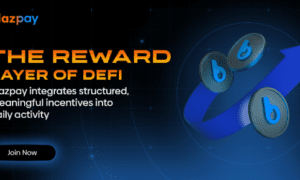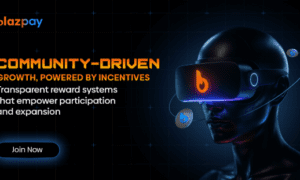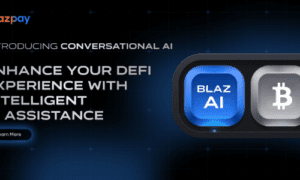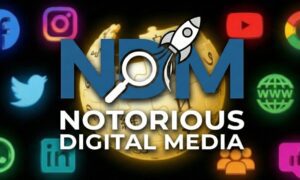From photos and videos to documents and financial investments, digital assets form a significant part of our lives. But as our digital wealth grows, so does the need to protect it. Enter Digital Asset Management (DAM) a solution that helps you organize, secure, and manage your digital treasures effectively.
Whether you’re a student, a budding entrepreneur, or a professional, understanding how to safeguard your digital wealth is crucial. Let’s look at the concept of DAM, why it’s essential, and the tools you can use to ensure your digital assets are safe and accessible.
What Are Digital Assets?
Digital assets are anything you own in a digital format that holds value. This includes:
- Personal files: Photos, videos, music, and documents.
- Professional assets: Business documents, presentations, and project files.
- Financial investments: Cryptocurrency, stocks, and online banking accounts.
- Intellectual property: E-books, designs, trademarks, and patents.
- Online accounts: Social media profiles, email accounts, and cloud storage.
These assets are invaluable, both emotionally and financially. Losing them due to poor management or cyber threats can be devastating.
Why Is Digital Asset Management Important?
- Organization: DAM tools help you organize files systematically, making them easy to find and use.
- Security: Protecting assets from cyberattacks, theft, or accidental loss is vital in a world where data breaches are common.
- Accessibility: With DAM, you can access your files anytime, anywhere, without worrying about losing them.
- Preservation: Digital assets can deteriorate over time. Proper management ensures they remain intact and usable.
Key Tools for Safeguarding Your Digital Wealth
The good news is that there are plenty of tools to help you manage and protect your digital assets. Here are some of the best options available:
Cloud Storage Platforms
Cloud storage services are essential for storing and backing up your files. Popular options include:
- Google Drive: Offers free storage up to 15GB and seamless integration with other Google services.
- Dropbox: Known for its user-friendly interface and robust sharing features.
- Microsoft OneDrive: Ideal for Windows users, offering integration with Office 365.
Pro Tip: Use two-factor authentication (2FA) to add an extra layer of security to your cloud accounts.
Password Managers
Strong passwords are your first line of defense against hackers. Password managers help you create and store unique passwords for all your accounts. Top options include:
- LastPass: A user-friendly tool that securely stores your passwords.
- Dashlane: Offers advanced security features and a dark web monitoring tool.
- Password: Known for its simplicity and excellent family-sharing features.
Pro Tip: Avoid using the same password for multiple accounts to minimize risks.
Digital Asset Management Software
If you have a large collection of digital assets, specialized DAM software can help. These tools are designed for organizing and managing assets efficiently:
- Adobe Experience Manager: Perfect for creatives and businesses managing media files.
- Bynder: A cloud-based DAM solution that simplifies file sharing and collaboration.
- Canto: Offers advanced search capabilities and an intuitive interface.
Pro Tip: Choose a DAM tool that fits your specific needs, whether it’s personal or professional use.
Cryptocurrency Wallets
If you own cryptocurrency, a secure wallet is a must. Options include:
- Hardware Wallets: Physical devices like Ledger Nano X and Trezor that store your crypto offline.
- Software Wallets: Apps like Trust Wallet and MetaMask for managing crypto on the go.
Pro Tip: Never share your wallet’s private keys and always enable security features.
Backup Solutions
Regular backups ensure you don’t lose important files. Consider these options:
- External Hard Drives: Reliable for offline backups.
- Automatic Cloud Backups: Services like Backblaze and Carbonite offer continuous backups.
Pro Tip: Follow the 3-2-1 backup rule: keep three copies of your data, on two different media, with one stored offsite.
Best Practices for Digital Asset Management
Using tools is just one part of the equation. Here are some best practices to follow:
- Organize Files: Use folders and naming conventions to keep your files structured.
- Update Regularly: Regularly update your software, passwords, and backups to stay secure.
- Audit Your Assets: Periodically review your digital assets to ensure everything is accounted for.
- Educate Yourself: Stay informed about the latest trends and threats in digital security.
- Plan for the Future: Create a digital estate plan to ensure your assets are accessible to trusted individuals in case of emergencies.
The Future of Digital Asset Management
As technology evolves, so do the challenges of managing digital assets. Innovations like blockchain technology and artificial intelligence (AI) are paving the way for more secure and efficient DAM solutions. For instance, blockchain can ensure the authenticity of digital files, while AI can automate organization and retrieval processes.
Investing time and effort in DAM today will save you from potential headaches tomorrow. By leveraging the right tools and adopting best practices, you can ensure your digital wealth remains safe and accessible for years to come.
Conclusion
Your digital assets are an integral part of your life, and managing them effectively is no longer optional. From cloud storage and password managers to specialized DAM software, the tools to safeguard your digital wealth are readily available. By taking proactive steps now, you’re not just protecting your assets but also setting the foundation for a secure digital future.
Remember, your digital wealth is worth protecting. Start today and take control of your digital life!



































